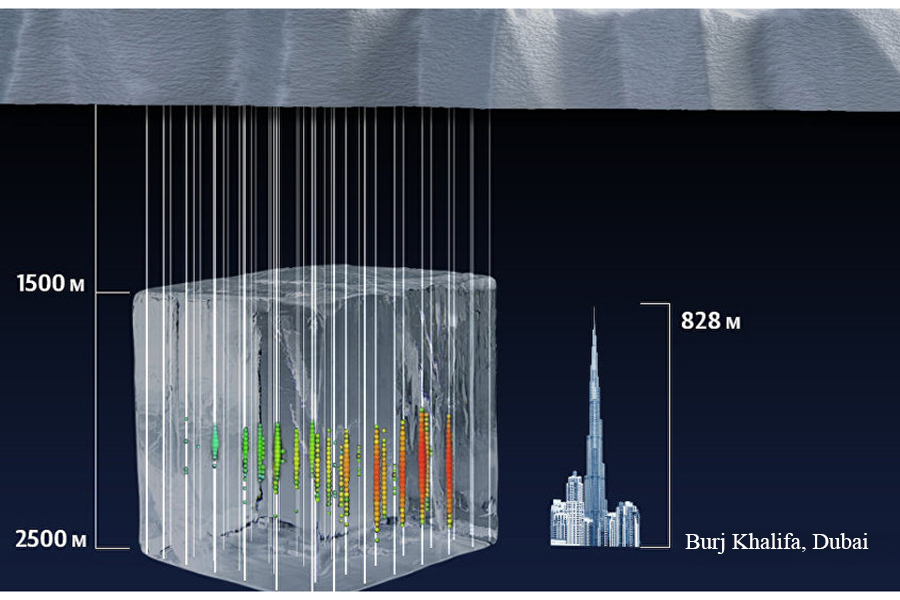The international team of astrophysicists with the participation of MEPhI has found a signal of high-energy galactic photons in the Fermi experiment. This discovery may elucidate the origin of high-energy neutrinos, which previously were recorded by the IceCube Neutrino Observatory at the Amundsen-Scott Antarctic station. The opening message was published in the journal "Physical Review-D".
Neutrino passes through matter where other particles "get stuck". For example, solar neutrinos come from the depths of the Sun and give information about thermonuclear reactions in the Solar core. High-energy neutrinos come to us from unknown extraterrestrial objects and provide information that is not available by other methods of observation.

The IceCube Neutrino Observatory
Researchers of the National Research Nuclear University MEPhI together with colleagues from the Paris Diderot University (France), the Norwegian University of Science and Technology (Norway), the University of Geneva (Switzerland) found a new component in the gamma-ray flux when they studied data of the Fermi gamma telescope at high energies (above 300 GeV).
«At energies above 300 GeV, signals from sources outside our Galaxy will be severely suppressed by gamma-ray absorption in intergalactic space. At the same time, gamma radiation is practically not absorbed within the Galaxy. Thus, a source of the new component should be in our Galaxy", said one of the authors of the study, Professor at MEPhI Dmitry Semikoz.
According to the scientist, the spectrum of the new component is in good agreement with the abnormally high neutrino flux recently discovered in the IceCube experiment. Since neutrinos are always "produced" together with gamma radiation, which has a similar spectrum, scientists have assumed that both spectrum have a common origin.
"In this research, we proposed two models that explain all the data,” said Professor Semikoz. “In the first model, neutrino and gamma radiation are produced in a close to us region of the Galaxy because of the interaction of cosmic rays. In the second model, neutrinos and gamma rays were produced by the decay of dark matter in our Galaxy."
It will be possible to ascertain these models by the heterogeneity of the signal in further studies. If the decay of dark matter is the signal’s source, the importance of this study cannot be overestimated. But even in the case of a close astrophysical source, for the first time we may have a chance to find the source of cosmic rays that produce the observed neutrino and gamma radiation.
Currently, an underwater neutrino telescope "Gigaton Water Detector" with a volume of one cubic kilometer is being built at the bottom of Lake Baikal in Russia. It is planned that in 2020 the Baikal telescope will be comparable in sensitivity to the IceCube experiment. And the Baikal telescope is even better adapted to observe the Central part of our Galaxy than the IceCube one, since it is located in the Northern hemisphere (neutrino researchers in the Antarctica observe particles literally "through the Earth").





